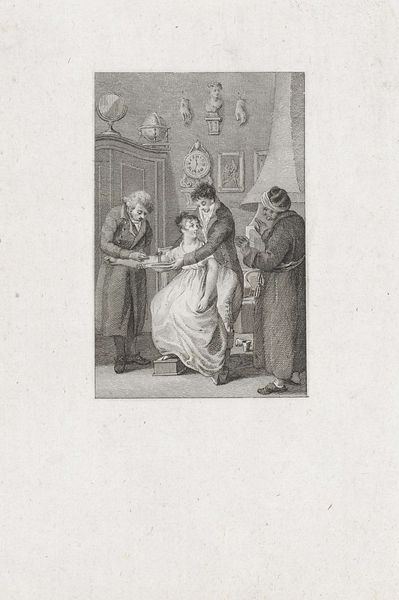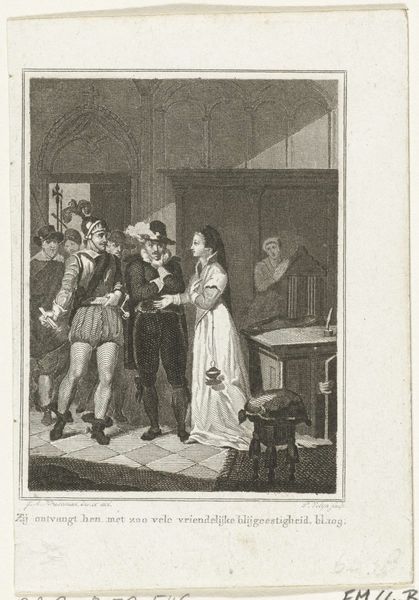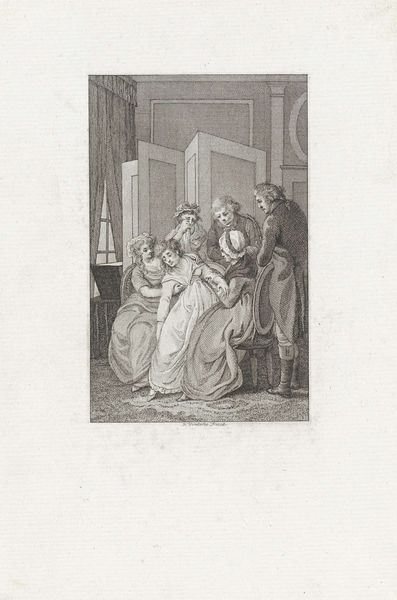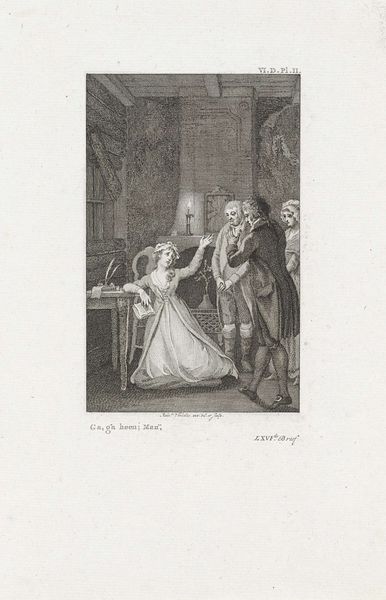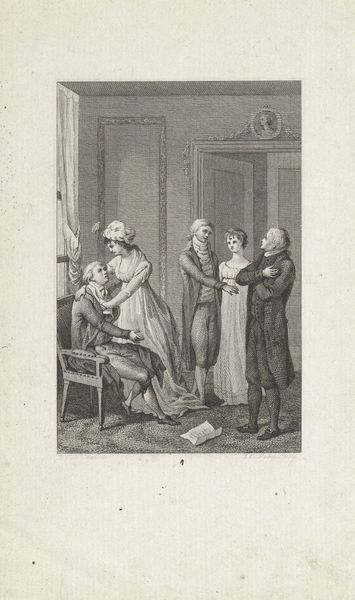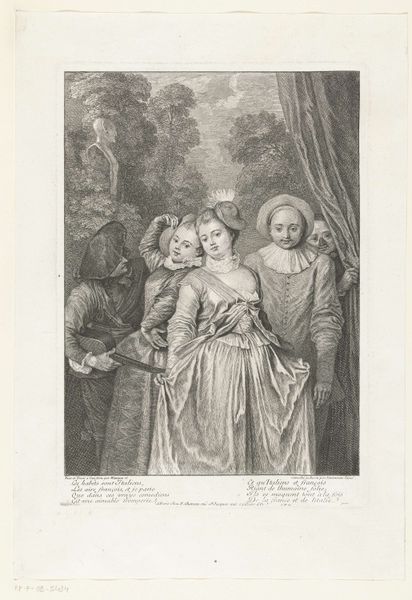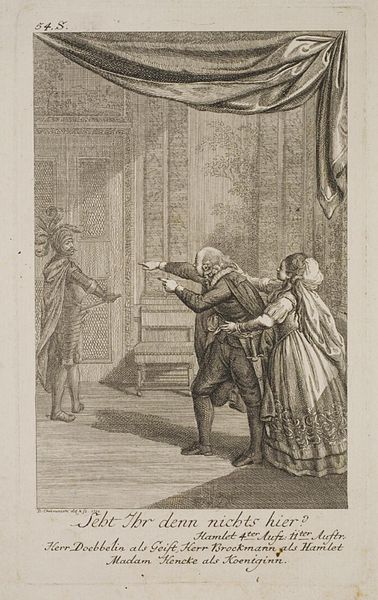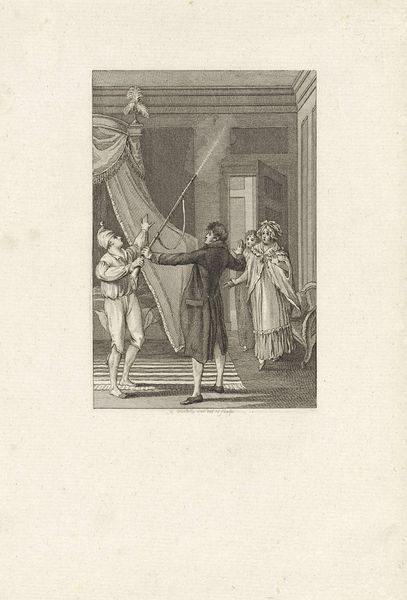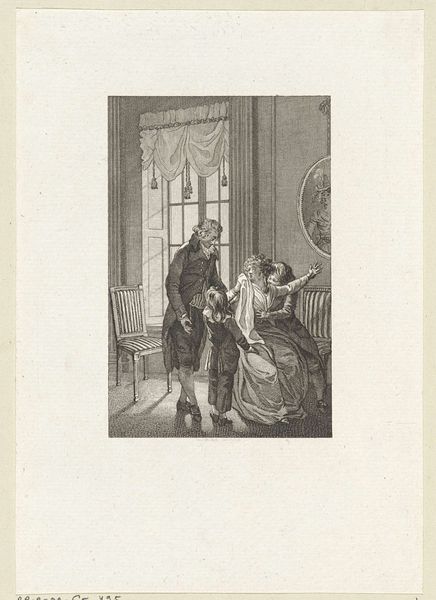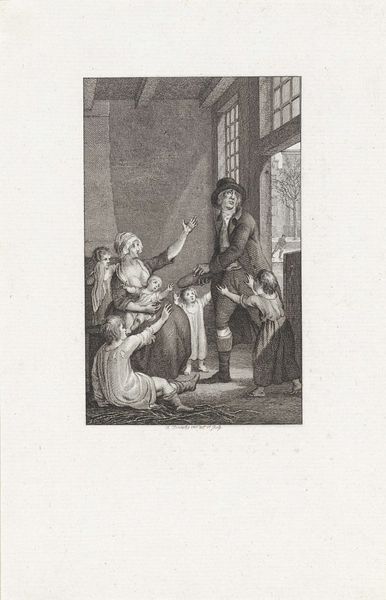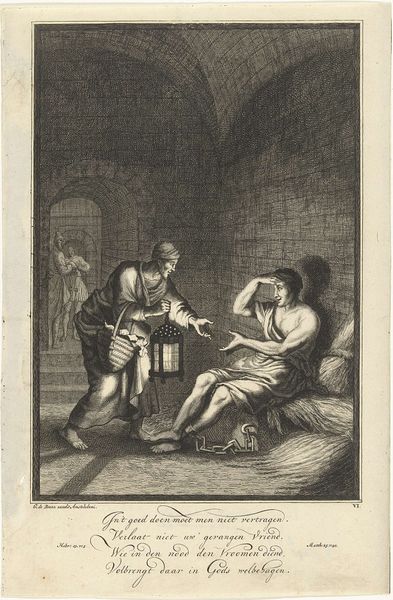
Dimensions: height 235 mm, width 188 mm
Copyright: Rijks Museum: Open Domain
Editor: So this is "Young Man Offering a Girl a Cookie," an engraving by Lambertus Antonius Claessens, made somewhere between 1792 and 1808. It's intriguing, but also a bit unsettling. The expressions seem exaggerated, and the whole scene feels staged. What do you make of this work? Curator: For me, it’s fascinating to consider this print through a materialist lens. We have an engraving, a *reproducible* image. Consider its means of production – the labour of the engraver, the availability of materials like copper plates and paper, the very economy that supported the creation and distribution of these images. Editor: Interesting. How does that perspective shift how we view it? Curator: Well, it moves us away from simply appreciating it as a depiction of a romantic gesture. Instead, we might ask, who was the target audience for this kind of print? Was it for a rising middle class eager to emulate aristocratic manners? The cookie itself – a processed good – speaks to evolving patterns of consumption. Look closely: What does its materiality suggest about changing access to refined foods and tastes? Editor: So, instead of focusing on the “high art” aspect, we consider it as a product tied to social and economic forces? Curator: Precisely! And how that challenges conventional definitions of "art." Also notice how the artisan who produced it is nowhere to be found in most analyses of art history. The figure in the painting and the implied narrative overshadow labor and industrial production. What if the means by which the image became available is what actually defines it? Editor: That definitely gives me a lot to think about – the process and the materials speak volumes beyond the surface image. I am glad I noticed the exaggerated affectation of the human subjects. The figures almost seemed as "printed" as the plate they are upon. Curator: Indeed. And by focusing on those material conditions, we gain a richer understanding of its cultural context and historical significance.
Comments
No comments
Be the first to comment and join the conversation on the ultimate creative platform.
